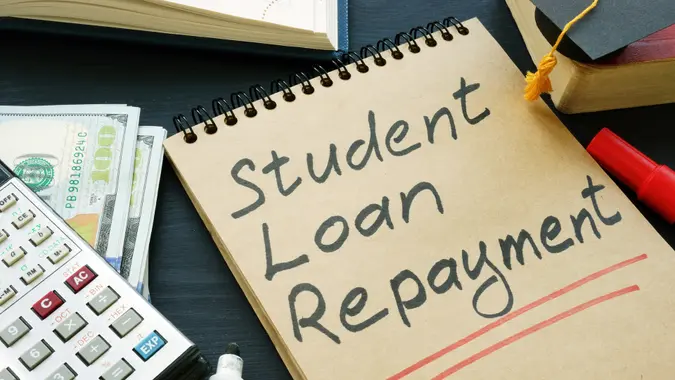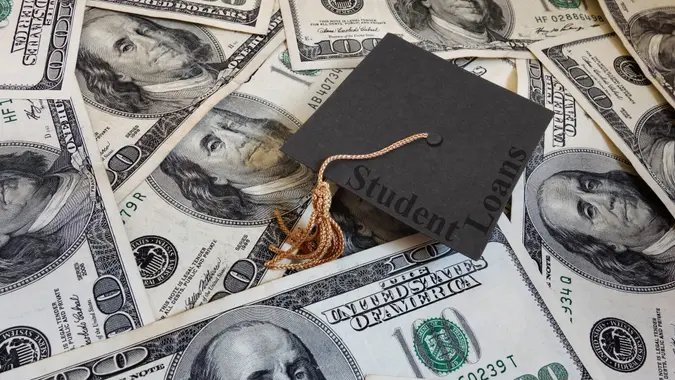How Restarting Student Loan Payments Will Benefit Your Taxes

Commitment to Our Readers
GOBankingRates' editorial team is committed to bringing you unbiased reviews and information. We use data-driven methodologies to evaluate financial products and services - our reviews and ratings are not influenced by advertisers. You can read more about our editorial guidelines and our products and services review methodology.

20 Years
Helping You Live Richer

Reviewed
by Experts

Trusted by
Millions of Readers
Now that the student loan payment pause has come to an end, the reality of monthly student loan payments is sinking in. But thankfully, now there’s a benefit that student loan borrowers can claim again: a break on their 2023 tax bill.
CNBC reported that the student loan interest deduction allows qualifying borrowers to deduct up to $2,500 a year in interest paid on eligible private or federal education debt.
This is welcome news for the nearly 44 million student loan borrowers across the U.S. who, alone, carry a combined $1.6 trillion of Federal student loan debt, according to USA Today.
Why Borrowers Can Take Advantage Of This Take Break Once Again
For over three years, student loan payments and interest accrual suddenly came to a grinding halt thanks to the payment pause that was put in place at the onset of the COVID-19 pandemic. During this time, student loan borrowers lost the ability to claim this student loan interest deduction on their taxes.
Why? It’s because most borrowers with federal loans stopped making payments on their student loan debt during the student loan payment pause. At the same time, the interest rate on most loans dropped to 0%.
Higher education expert Mark Kantrowitz told CNBC, “you can claim the student loan interest deduction based only on amounts actually paid.”
As interest on existing student loans began accruing again in September 2023, borrowers could have up to four months of interest payments to deduct by the end of 2023. This, in turn, will reduce borrower tax liability overall. It’s worth noting that about 13 million taxpayers took advantage of this tax break before the pandemic.
Tax Specifics To Consider About Student Loan Interest
Student loan servicers or lenders report interest payments of $600 or more per year to the IRS via tax form 1098-E. You should receive a copy — if not, be sure to look out for one directly from your loan servicer or lender.
Depending on which tax bracket you fall into and how much interest you paid, it’s explained that the deduction could be as much as $550 per year. While this is considered an “above the line” deduction, meaning that you don’t need to itemize your taxes to claim it, there are still income limits to claim it.
For individuals with a modified adjusted gross income (MAGI) of $75,000 the deduction decreases. But those with a MAGI of $90,000 or more are not eligible. For married couples filing jointly, the phaseout begins at $155,000, and those with a MAGI of $185,000 or more are ineligible.
To add, Betsy Mayotte, president of the nonprofit The Institute of Student Loan Advisors, explained to CNBC that borrowers’ eligibility for the deduction may also be minimized if their employer made payments on their student loans as a work benefit.
U.S. Lawmakers Want To Expand The Student Loan Tax Break
Some welcome news for student loan borrowers: House lawmakers introduced a bill in Congress last month to expand the existing student loan interest deduction from $2,500 in annual interest to $10,000. If passed, the proposed legislation would also allow borrowers to deduct all student loan payments up to $10,000, not just the interest) and claim an extra $500 deduction for each dependent.
More From GOBankingRates
 Written by
Written by 
























